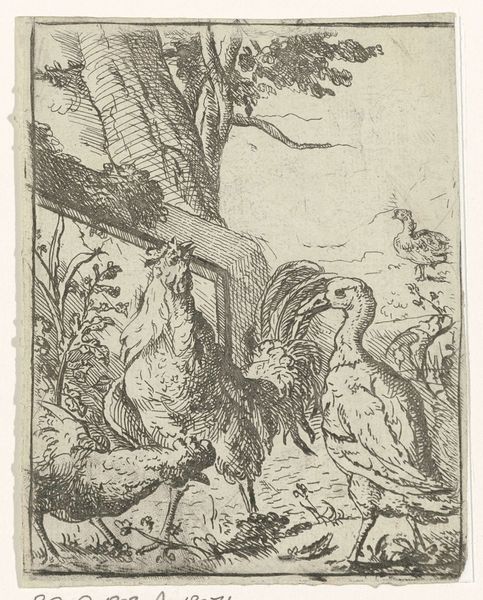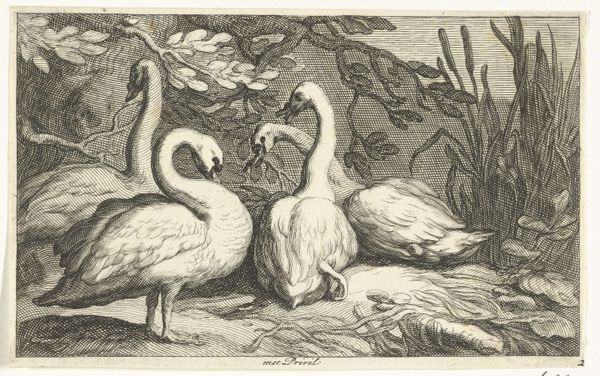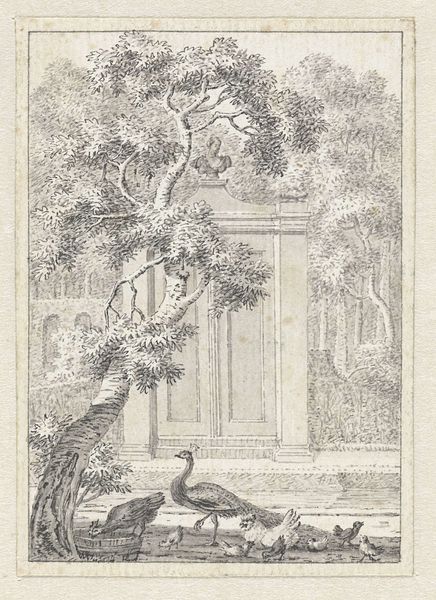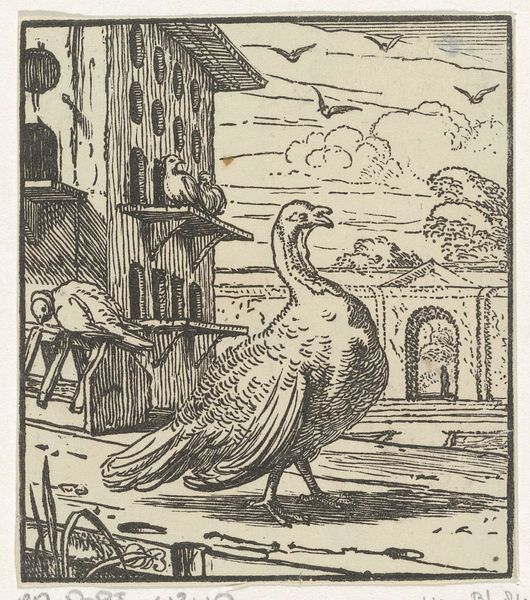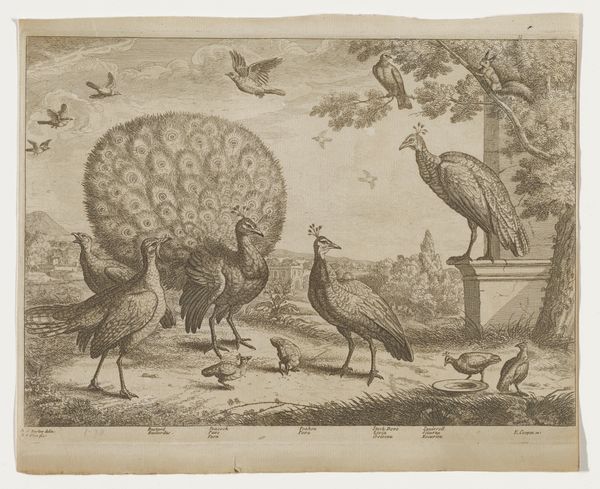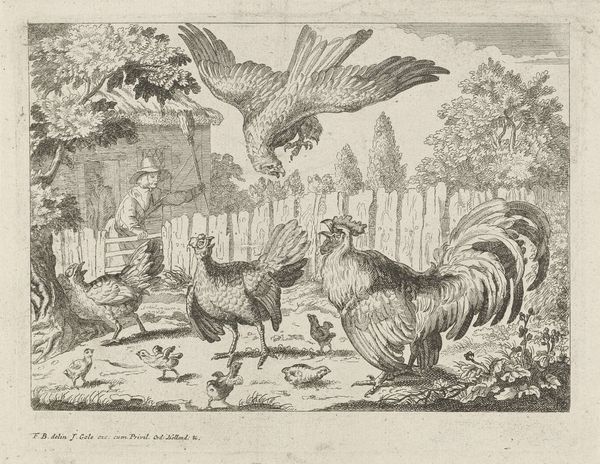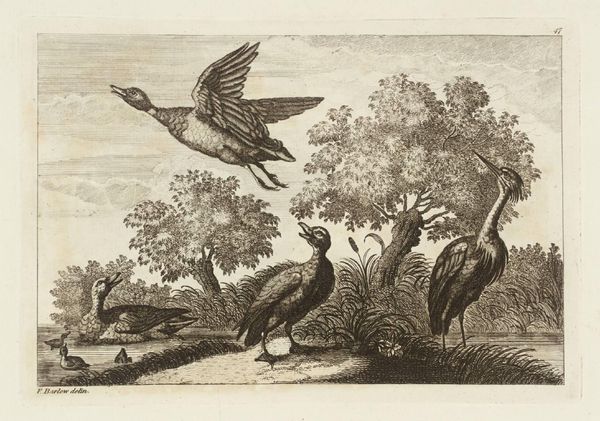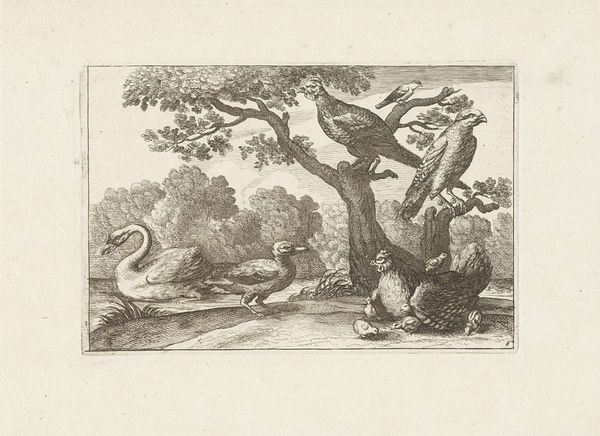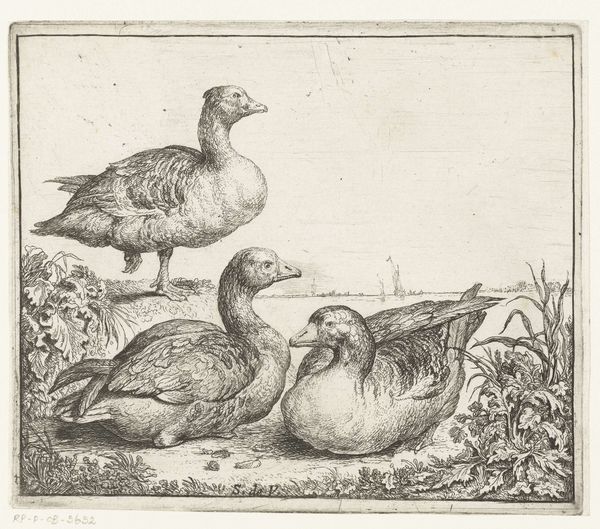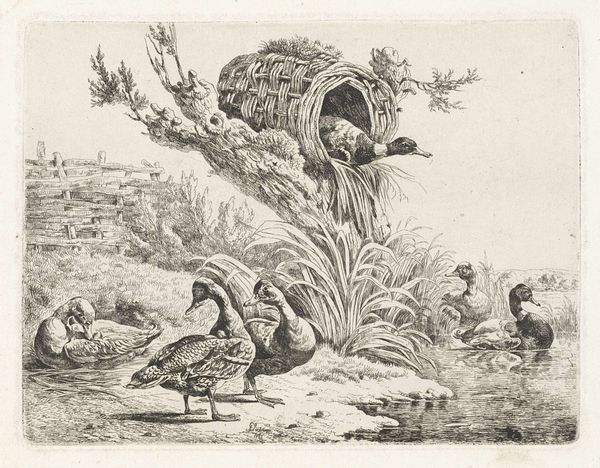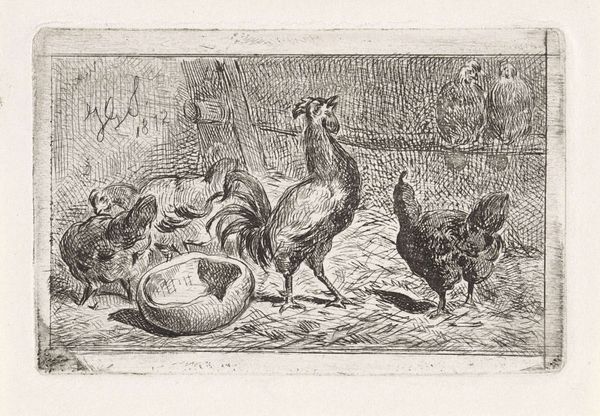
print, etching, engraving
# print
#
etching
#
landscape
#
etching
#
genre-painting
#
engraving
Dimensions: 200 mm (height) x 133 mm (width) (brutto)
Editor: So, here we have "Gaasen og Svanen", which translates to "The Goose and the Swan", an etching and engraving by Alexia von Lode, dating back to 1760. It's quite serene, with these swans gliding on water and an old watermill in the background. What strikes you about this piece? Curator: What I find particularly interesting is the social context that elevated these genre scenes, and the shift in the perception of nature and labor that paintings such as this reflect. This piece offers a glimpse into 18th-century Danish society. It isn't simply about beautiful birds. What was the function of this imagery at that time, what can it communicate, or legitimize? Editor: Could you expand on that a bit? I’m not entirely sure what was so elevated about this scene. Curator: Consider where it was displayed and who owned it. Aristocrats and wealthy bourgeois valued images showing "idyllic" country life to create and circulate idealized ideas around labor, leisure, and social status. What kind of political functions do images serve? Is nature portrayed truthfully, or strategically? How is social identity expressed? Editor: Ah, so it's less about documenting reality and more about projecting a certain image of country life? One designed for those removed from that actual existence. I see. It's about social messaging using seemingly benign scenes of nature. Curator: Precisely. And the fact that this is a print makes it even more accessible, disseminating these ideas wider than an oil painting. Also, notice the careful arrangement. There's both swan *and* goose -- so what values and messages are being assigned to those symbolic choices and groupings? Editor: I had just viewed the artwork on its surface value but now it has a deeper contextual and critical reading thanks to you! Thank you. Curator: It goes to show the power of art as a communicator and cultural artifact. It teaches us a great deal. I certainly see it differently too!
Comments
No comments
Be the first to comment and join the conversation on the ultimate creative platform.
